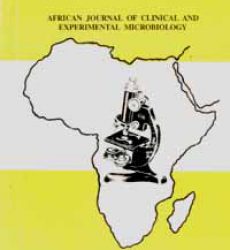Abstract
Background: The public health implications of helmintic infection in developing countries were generally agreed by many researchers to include poor growth and poor school performance among others. But the role of school based mass de-worming in combating the menace of helminthiasis remains controversial. Several studies have assessed the impacts of mass de-worming with conflicting results. This study was designed to evaluate the impact of antihelminthic mass chemotherapy on changes in growth indices and school absenteeism.
Materials and methods: Albendazole tablets were administered by school teachers to pupils after data and stool sample collection. Follow up data were collected 6 months later for impact assessment. Ponderal growth retardation was defined as BMI under 5-percentile.
Results: Overall helminth infection rate was 373/1442 (39%) of the pupils before the intervention. Ascaris lumbricoides (n=247; 25.8%) and hookworm (n=89; 9.3%) were the most common. At enrolment 19.6% of children with and 11.8% without helminth infections had BMI below the 5-percentile. These figures were reduced to 9.2% and 8.8% after de-worming respectively. No effect of de-worming was seen on longitudinal growth. The number of helminth infected children with >25% absenteeism reduced by 12.5%, while the reduction rate was 6.8% in the uninfected group.
Discussion: The difference in response to de-worming between infected and uninfected children strongly support the beneficial effect of de-worming on growth and school absenteeism. The intervention could be administered by school teachers without formal healthcare training, thus allowing integration of the programme into existing structures.
Keywords: Helminthes, Absenteeism, Preventive Chemotherapy
Download full journal in PDF below
School based mass de-worming initiative in south-west Nigeria

